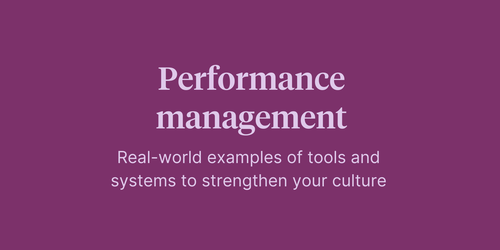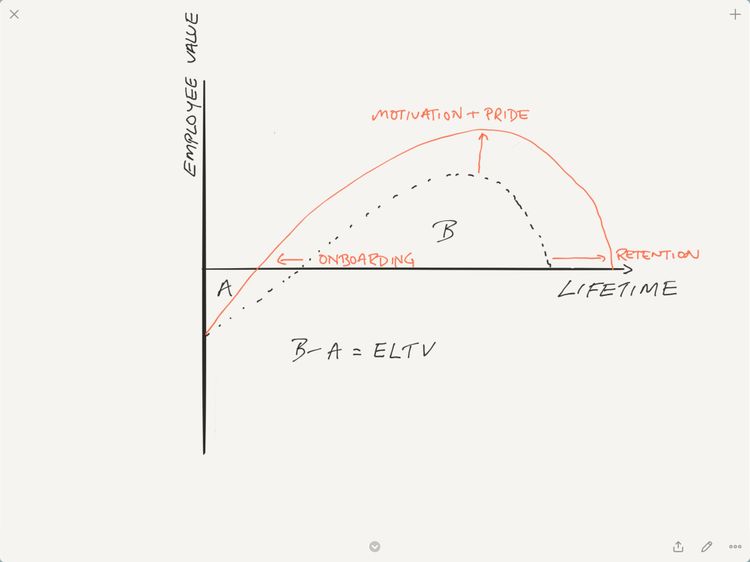
Article
Employee Lifetime Value (ELTV) is a valuable metric. It measures the net value that an employee provides to an organization throughout the complete employee life cycle, which Maia Josebachvili explains is increasingly important in today's world of work. ELTV lets us put a dollar figure on the returns to be made from investing in people and culture. In this way, ELTV can help build a strong case for giving projects and initiatives the green light and allocating budgets.
Yet, from another perspective, ELTV is only half of the employment equation. In reducing things to dollar terms, ELTV may overlook the less tangible value that an employee provides to and receives from their employment. And those less tangible elements can end up having a significant tangible effect.
ELTV is particularly good as a basis for visualizing projected outcomes. Plotting variables against lifecycle phases, we can see how the employment relationship translates into financial benefit over time.
In the below graph, A is the financial cost to the organization of recruitment, onboarding, and training. B covers the period that follows, where the employee provides a net-positive value to the organization. This lasts until the end of the employment relationship.
In this simple approach, B minus A gives the ELTV in dollar terms.

From “What happens to a dollar invested in People & Culture?” Ramon Elzinga
However, as Ramon Elzinga points out, this graph implies a few opportunities for increasing ELTV. In mathematical terms, we want to maximize B while minimizing A. In practice, this translates as:
In the graphs above, the end of the curve is where the employment contract ends – but is that really the absolute end of the relationship?
Steven Huang, an Insights Strategist at Culture Amp, points out that an employment relationship still has an impact after paychecks stop. How? Reputation.
If an ex-employee continues to say good things about their former company, the ELTV curve will actually start to flatten out above zero. This means that ELTV could continue to have a positive value after the employment contract ends.
On the flipside, if an employee had a bad experience and the word-of-mouth they generate is negative, so too the post-paycheck ELTV curve will be in the negative.
As Steven shows, the employee-perceived quality of the employment relationship can continue to have an impact long after.
Importantly, after the end of the employment contract, the monetary value of an employee’s productiveness ceases. However, the value that an employee perceives from the relationship becomes the pivotal factor in the more complete calculations of Employment Relationship Value.
While ELTV shows the financial return an employer gets from employing someone, a complete picture of employment shows it to be a dynamic, mutually influential relationship. Put simply, it’s a two-way street. The flow in each direction complements the other.
As employees provide value to the employer, the employer provides value to the employee.
As one trends up (or down) there is potential for a similar movement in the other. In fact, long-term value calculations (that extends considerably beyond the paycheck phase) may be more dependent on the value the employee perceived in the relationship.
While typical ELTV calculations end at the point of contract termination, a more complete understanding of Employment Relationship Value will extend beyond that.
It’s good for both parties to get something out of a relationship for as long as it makes sense. It’s also good to keep things positive because the end of direct involvement does not necessarily put an end to the consequences.
So, this is one of many cases where the best possible outcome for both employer and employee is a win-win situation. Reciprocity of value from the employment relationship is the goal. Such reciprocation requires the understanding and effort of both parties to make it work.
Get the latest research and expert advice, HR events, webinars, and more – straight to your inbox.